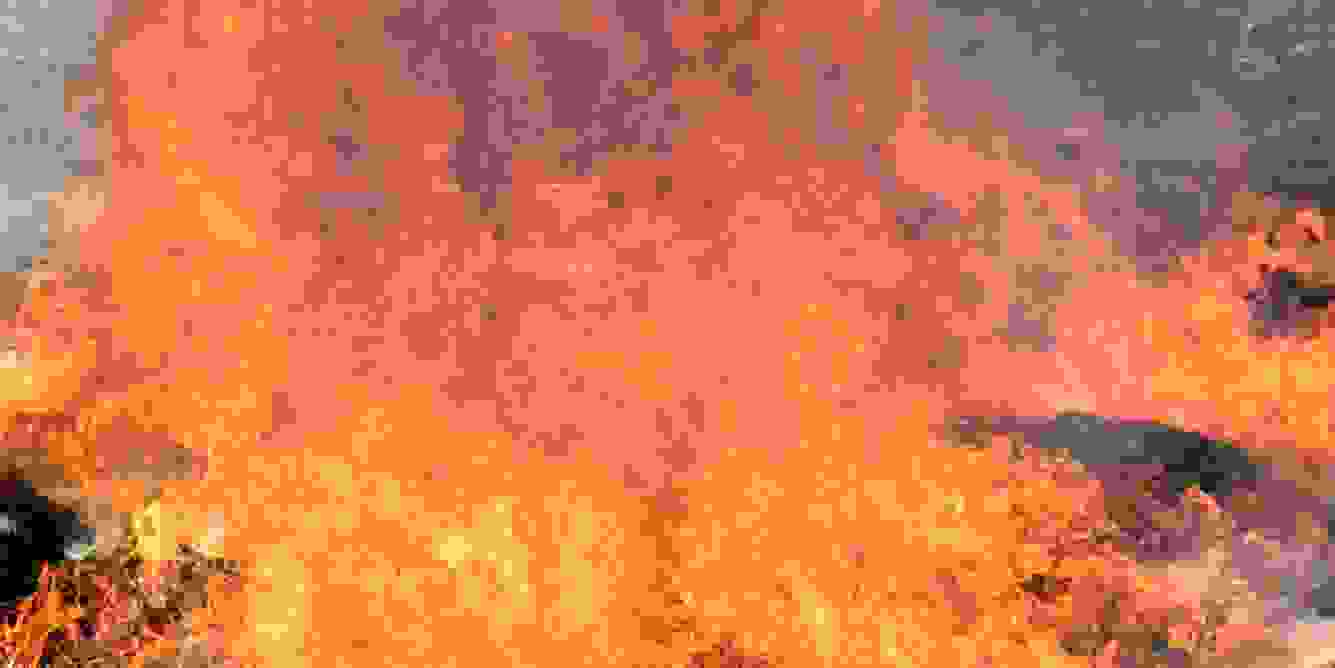Private landowners and managers tend to shy away from the use of prescribed fire for maintaining rangeland and forest ecosystems in spite of the known benefits because of potential liabilities, according to a Texas A&M AgriLife Research study.
This is a concern, said Dr. Bill Rogers, a Texas A&M AgriLife Research professor in the Department of Ecosystem Science and Management at Texas A&M University, as fire has historically played an important role in achieving land management objectives and eliminating its use could have detrimental effects.
A paper summarizing an AgriLife Research study, “Legal barriers to effective ecosystem management: exploring linkages between liability, regulations and prescribed fire,” was published in the December issue of the Ecological Applications journal. The paper was developed by Carissa Wonkka, who completed her doctoral work with Rogers. Dr. Urs Kreuter, an AgriLife Research rangeland scientist, also contributed to the report.
“This paper is a novel approach,” Rogers said. “It utilized Carissa’s law degree and her ecological expertise in order to assess how different legal liability standards adopted by various states in the southeastern U.S. markedly influences the respective landowners’ and managers’ use of prescribed fire as an ecological management tool.”
“The ramifications for this work should extend well beyond the regions examined and will provide sound evidence for the increasingly recognized importance of integrated or interconnected ecological, economic and socio-political influences on natural resource management,” he said.
Rogers said this work highlighting the effects the legal landscape is having on private land prescribed burning and the liability-related disincentives involved sheds light on the constraints that can influence the effectiveness of ecosystems management efforts.
“Ecologists and land managers need to be aware that regulations and liability concerns may create legal barriers that inhibit the use of prescribed fire, and thus, necessitate greater education of both the public and policymakers regarding the essential role fire plays in these ecosystems,” he said.
Prescribed fire is a cost-effective tool that allows for tailoring of range and forest restoration and management, Rogers said. Without it, valuable timber species such as loblolly pine have been replaced by less economically desirable species in southeastern forests.
In the grasslands of the Great Plains, prescribed fire prevents shrub encroachment, lower forage productivity and a degradation of habitat for wildlife, he said. In addition, fire suppression and limited prescribed burning has resulted in the accumulation of fuels in both forests and encroached grasslands, increasing the risk of catastrophic wildfire.
However, landowners are hesitant to use this tool as they may open themselves up to a potential lawsuit in the event that a prescribed fire causes injury or property damage, Wonkka said. Prescribed burning is regulated by state law, and states apply one of three liability standards to lawsuits involving prescribed burns: strict liability, simple negligence and gross negligence.
Recognizing the considerable ecosystem changes that have resulted from prolonged fire suppression policies and the need to make this tool available as a management option, many states, especially in the southeastern U.S., have undergone statutory reform to promote safe use of prescribed fire, Wonkka said.
The purpose of these statutory reforms, often called ‘‘right to burn’’ or ‘‘prescribed burning’’ acts, is to encourage use of controlled fire for resource protection, public safety and land management, she said.
“We explored the relationship between prescribed burning laws and decisions made by land managers by taking advantage of a natural experiment to compare landowner-prescribed fire use in contiguous counties with different regulations and legal liability standards,” she said.
They found private landowners in counties with gross negligence liability standards burn significantly more acres than those in counties with simple negligence standards. In addition, no difference existed between counties with statutorily mandated regulatory requirements and those requiring only a permit to complete a prescribed burn.
“We believe lawmakers attempting to develop prescribed burning statutes to promote the safe use of prescribed fire should consider the benefits of lower legal liability standards in conjunction with regulatory requirements that promote safety for those managing forests and rangelands with fire,” Wonkka said.
She said ecologists and land managers could better prepare and motivate stakeholder groups who influence prescribed fire policies with this understanding of how policy regulations and liability concerns create legal barriers inhibiting the implementation of effective ecosystem management strategies.
“Our results show that private landowners are more likely to use prescribed fire for managing their properties and burn a greater proportion of private land in counties where their state has adopted gross negligence liability standards, compared with landowners in counties who are subjected to state-mandated simple negligence legal standards,” Wonkka said.
Regulatory requirements, such as adequate firebreaks, personnel, equipment, written burn plans and certified prescribed burn managers on-site do not decrease the amount of burning on private land, Wonkka said.
“In fact, these types of regulations, in conjunction with lower liability, will make prescribed fire more available to landowners and managers while providing some safety assurances for neighbors,” she said.
Read the full AgriLife Today article for more information on this research.

